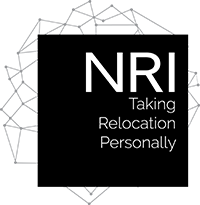
We begin this New Year with Tax Reform changes that will impact employee relocation. The vote we were waiting for has finally happened and was signed into law just before the holidays. The new Tax Cuts & Jobs Act will necessitate immediate changes to most corporate relocation policies.
Moving Expense Deduction
The first, and most obvious, change that you need to address in your Employee Relocation Policy is the elimination of the Moving Expense Deduction. The shipment of household goods, storage, and the family’s final move to the new location are now considered taxable income. If your company currently grosses-up taxable relocation expenses, you will likely decide to gross-up these expenses as well. The following chart is an example of the additional tax gross-up on the shipment of Household Goods:
|
HHG Cost
|
Tax Assistance
|
|
$5,000
|
$3,000
|
|
$10,000
|
$6,000
|
|
$15,000
|
$9,000
|
|
$20,000
|
$12,000
|
So, while your leadership is busy deciding how to invest the likely significant tax savings resulting from the reduction in the corporate tax rate from 35% to 21%, be sure to let them know that relocation budgets will increase by the amount of the estimated gross-up. Recruiting, retention and engagement are challenging enough – the financial tax burden shouldn’t be absorbed by your coveted talent!
—
Federal Supplemental Rate
The federal tax supplemental rate has decreased from 25% to 22% as a result of official IRS notices on the new tax law. This is good news for relocation programs that provide gross-up tax assistance to employees, which are most. This reduction will help offset the additional gross-up expenditure created out of Tax Reform (household goods, final move) by lowering the overall federal rate used for most inverse “tax on tax” gross-up calculations. So while relocation gross-up costs will increase, at least the rate used for the federal calculation has decreased.
—
State And Local Tax (SALT) Deduction
A key hidden impact on relocation will be the elimination of the SALT (State And Local Tax) deduction from federal taxes. SALT and 1st/2nd home property taxes combined will be limited to $10,000. This can impact your transferring employees – some for the worse – and some for the better. Depending on where your employees are moving from, they will either enjoy a more affordable cost of living or they may resist the relocation due to the limitations on SALT and property taxes.
~
The Tax Foundation interprets individual tax burden by what taxpayers actually spend in local and state taxes, rather than report these expenses from the state revenue perspective used by the Census Bureau. According to the foundation, the five highest state-local tax states were: New York 12.7%, Connecticut 12.6%, New Jersey 12.2%, and Illinois/California/Wisconsin 11.0%.
~
Property tax falls under local, not state, jurisdiction. According to analysis by The Tax Foundation, the most expensive property tax counties in terms of percent of income are located in New Jersey (around 8.5%) and the least expenses spots for property tax reside in Louisiana (around 0.25%). Because of all these state-to-state variances, employees may request a Cost of Living Analysis due to their personal circumstances to learn about their tax impact. NRI can provide these COLA reports to you as needed.
—
Summary
2018 will be an interesting and exciting year for corporations moving and recruiting new employees! NRI Relocation will be in touch with our customers early in the year to discuss the tax changes and the impact on their Relocation Policy. We are here to advise you and to update your existing policies. As always, our goal is to keep the administration of relocation less “taxing” on you!
Please Contact Us or call us at 1-800-598-8887 for a free tax consultation. We’re also happy to provide immediate assistance with your relocation policies.


